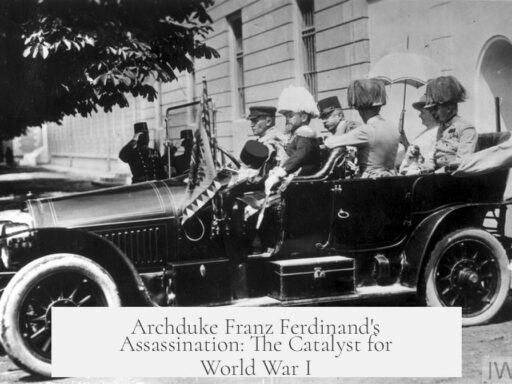General George S. Patton died from injuries suffered in a motor vehicle accident shortly after World War II. Modern historical analysis largely supports that his death was accidental, despite ongoing conspiracy theories suggesting assassination.
Patton’s car collided with a truck while he was stationed in Germany. Only Patton sustained serious injury, a broken neck, though others in the vehicle escaped unharmed. This selective injury pattern makes assassination by staged accident unlikely. Patton’s history of being accident prone throughout his life aligns with the possibility of an unintended crash rather than a targeted attack.
Among conspiracy theories, the most discussed involves Soviet leader Joseph Stalin. Patton openly expressed disdain for the Soviet Union and criticized the Allied focus on Germany instead of controlling Soviet influence. Some speculate Stalin viewed Patton as a threat and orchestrated his death. However, no concrete evidence links Stalin or Soviet agents to the accident.
Other theories, such as involvement by Jewish groups, lack credible support and are generally dismissed by historians. These ideas often arise from Patton’s known prejudices but have no basis in verified documentation.
Additional details clarify misunderstandings around the funeral. The presence of a Black pallbearer, Master Sgt. William Meeks, Patton’s orderly and longtime aide, demonstrates respectful military customs rather than conspiracy. Notably, Patton commanded desegregated units during the war, highlighting complex social dynamics rather than covert plots.
| Aspect | Explanation |
|---|---|
| Cause of Death | Motor vehicle accident with Patton alone seriously injured |
| Accident Probable | Patton’s accident-prone nature supports unintentional crash |
| Stalin Theory | Speculation based on Patton’s anti-Soviet views; no evidence |
| Other Theories | Lack of credible data or dismissed by experts |
| Funeral Details | Black pallbearer was Patton’s aide, reflecting military protocol |
Patton’s death remains a subject of fascination, but modern research and primary sources favor an accidental cause. His outspoken personality and wartime actions made him controversial, yet no verified proof exists of assassination.
- Patton died from injuries in a 1945 car accident, alone seriously hurt.
- His accident-prone history supports the event as a genuine accident.
- Stalin assassination theory is speculative, not evidence-based.
- Other conspiracy theories lack credible historical support.
- Funeral arrangements and aides reflect respect, not foul play.
Did General Patton’s Death Come from an Accident or Assassination? Let’s Unpack the Mystery
General George S. Patton died following a motor vehicle accident shortly after World War II ended, and while some claim it was a planned assassination, the facts reveal a far less sinister explanation. That’s the nutshell, but let’s dive deeper into the surprising story behind the legend and the theories that still swirl decades later.
Patton’s death has always been a magnet for conspiracy theories. Why? Because he was a larger-than-life figure known for his bluntness, military brilliance, and, let’s say, politically incorrect views. But was his death truly a carefully orchestrated hit, or just a tragic accident?
What Really Happened in That Car Crash?
On December 9, 1945, Patton was in a car accident in Germany. The shocker? Only Patton was seriously injured, suffering a broken neck while riding in the back seat. No one else in the vehicle was hurt. That’s a bit odd, sure. But is it suspicious?
Many historians argue that it’s not. The accident wasn’t a high-speed chase gone wrong. The crash happened at a relatively low speed. If this was an assassination, wouldn’t those trying to kill Patton leave no room for doubt? Yet, nobody else in the car was harmed.
“No one else in the car was injured in the accident, but Patton sitting in the back seat suffered a broken neck. In my opinion this makes it very unlikely the accident was an assassination attempt.”
Patton was accident-prone throughout his life. From horseback mishaps to car accidents, he had a knack for finding trouble on the road. This accident fits that pattern.
Why Would Anyone Want Patton Dead? The Stalin Theory
One compelling theory points fingers at Joseph Stalin. What’s the reasoning? Patton had little love for the Russians. In fact, he believed America fought the wrong enemy during the war — Germany instead of the Soviet Union. This stance rubbed some the wrong way in Moscow.
- Patton’s outspoken hatred of Stalin’s forces made some guess that “the Russians had enough” of him.
- Stalin reportedly disliked Patton’s disrespect.
The problem? There’s no hard evidence supporting a Soviet assassination plot. We have guesses and suspicions, but no smoking gun. And remember: assassinations tend to be cleaner or leave more obvious signs of foul play. This crash left no clear trail.
What About Other Theories? Are They Worth Considering?
Some have tossed around more controversial ideas, like Jewish conspiracies or other secret groups. But these are shaky at best and often tied to baseless stereotypes.
“I don’t think any Jews had him taken out but I could always be wrong. I can’t see it and they already have enough conspiracies around them as a people and I wouldn’t want to add more unnecessarily.”
Sometimes, it’s best to skip the conspiracy bingo and look at the concrete facts: accident, unfortunate timing, and a man who was just accident-prone.
Patton’s Unique Legacy: Desegregation and Complicated Views
Here’s a twist: Patton was the first American general to command a fully desegregated military unit, mixing Black and white soldiers in a pioneering move for that era.
- His black pallbearer, Master Sergeant William Meeks, was a longtime aide and driver. This wasn’t just a show; it reflected a genuine bond and respect.
- At least one Black tank battalion served under Patton with distinction during the Battle of the Bulge.
This progressive stance clashes with the image of Patton using offensive language typical of his time. He was a man of contradictions, complicated by his Southern roots, Confederate heritage, and prevailing prejudices of the early 20th century.
Does More Recent Historical Study Shed Light on Patton’s Death?
Modern historians emphasize several points:
- The crash injuries do not align with a sophisticated murder plot.
- Patton’s history of accidents supports the idea of unfortunate mishap, not assassination.
- The presence of his black orderly at his funeral reflects respect, not conspiracy.
- Suspicions about Soviet involvement lack corroboration from declassified documents.
In fact, revisiting the accident details reveals the odd–but not impossible–scenario of an unfortunate collision leading to a fatal injury isolated to the general.
What Can Readers Take Away From This?
- Be skeptical of conspiracy theories without solid proof. Patton’s death is a cautionary tale.
- Historical context matters. The political tensions with the Soviets were real but don’t automatically mean foul play.
- Human factors count. Accident-prone individuals sometimes meet unexpected ends.
- Patton was a man of his time—flawed, bold, and complex. His legacy is richer than a simple “hero or victim” story.
Has history exonerated the accident theory? Mostly yes. The truth appears less exciting than a spy thriller but perhaps more honest. General Patton’s death seems to be a tragic accident reported in official records, overshadowed by his enormous impact on WWII and military history.
So next time someone whispers “It was an assassination,” maybe ask them: Who exactly orchestrated it? And where’s the evidence? Sometimes the simplest explanation, inconvenient as it might be, turns out to be the right one.


